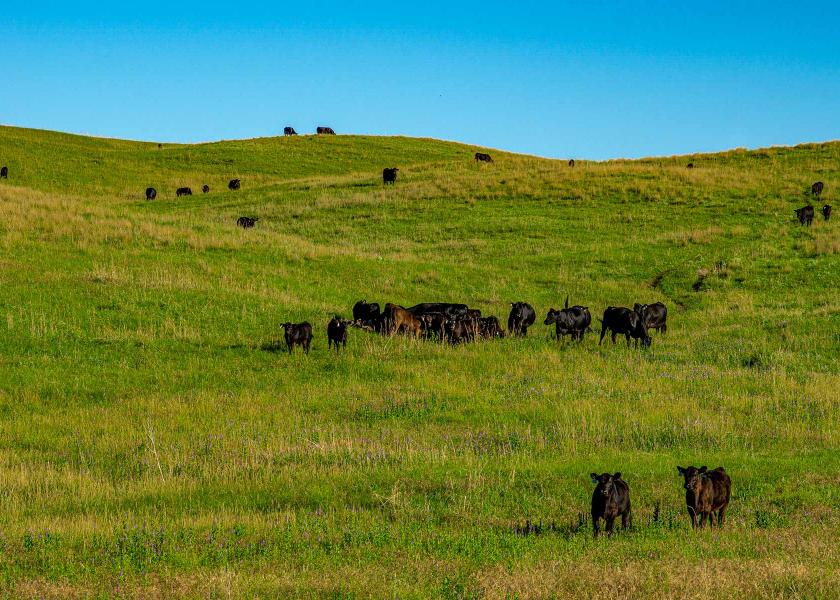Sexten: Advancing Genetic Improvement

Walking through the meat case today it's not difficult to get an idea where the future of cattle production is headed. If we study current market claims of dairy, pork or poultry there are few if any claims focused on adding anything to the current products. In most cases the premium products are free of something: cages, hormones, additives, and antibiotics to name a few.
Because most current protein claims are marketing focused, readers might suggest I’m confusing the future of beef marketing with cattle production. Whether you look at other proteins or beef it is consumer demand for end-product claims that are driving production decisions. Consumer preferences lead marketers to build premium product categories and brands focused on satisfying these consumer demands. Agreement on where the industry is going is not my focus, rather looking at the rapidly advancing technology that will help us get there.
When we consider the consumer driven change toward a free-from marketing model it’s worth reflecting on current food preferences and the potential for unintended consequences. Technology removal from livestock production adds production inefficiencies associated with reduced growth rates and/or less desirable feed conversion. So while satisfying the free-from consumer at one level, we make a tradeoff where the sustainability focused customer is less satisfied.
The modern consumer continues to expand beyond the grocery shopper. As we incorporate multiple aspects of the supply chain, understanding consumer demands is getting increasingly complex. Today corporate entities are looking to satisfy carbon and sustainability claims and will expect technology to assist in meeting these claims in the next 10, 20, or 30 years depending on the target. The details around how these targets can be obtained again we look at pork, poultry, and dairy.
As you think about how your favorite protein has changed over time, first consider what drove this transition. Has the animal naturally evolved to adapt to modern farming methods or a changing production environment? Given our relatively short time frame in food history I suspect there are few if any changes in domestic livestock production due exclusively to Darwinian evolution or natural selection.
As free-from marketing evolved, commercial poultry, swine and dairy operations have increasingly shifted focus toward genetic improvement. Adopting genetic improvement is one of the most consumer friendly technologies to improve product quality and production efficiencies.
Each species took a slightly different approach toward balancing production efficiency while maintaining or enhancing end-product quality and uniformity. In some cases improving genetic production efficiency at the expense of the product, causing a breeding program course correction to improve end-product quality.
If we expand the consideration beyond animal proteins to row crops a simple conclusion is apparent, genetic selection is the best tool to make improvements in productivity. Imagine planting an undocumented corn variety with no stacked traits, herbicide synergies or environmental adaptability. Varieties are increasingly tailored to regional environments adapting to drought or cold tolerance. None of these improvements are left to random evolution, each considered from a production, efficiency and marketing perspective.
Row crops also provide a reminder that regionality is manageable. It is not uncommon to encounter genetic improvement naysayers who suggest selection should be limited to regional cattle offerings because cattle are unlike any other livestock species due to dynamic environments. Micro climates exist across the US yet corn and soybean hybrids are developed using diverse genetics from across the globe with those regional issues in mind.
The advancements in genetic improvement tools are reminiscent of the evolution of computers. I started making pictures one pixel at a time using a Tandy 1000 in Jr High. Today I carry the equivalent of a pocket sized computational Swiss Army knife of a computer, camera, flashlight, and phone in one device. Similarly I played the cow game with the singular goal to improve yearling weight using the new EPD’s enabling single trait selection. Now I can use genomics to know the long-term genetic potential of a replacement heifer within weeks of her birth.
Genetic tools in the beef industry took another significant leap in March. The FDA approved the sale of beef from gene-edited cattle carrying genetics resulting in short slick hair. This approval was the first case where edited animals were approved using a “low-risk determination” due to the similarity of existing natural genetics.
The approved technology paves the way for additional considerations of other free-from consumer and production interests. Consider the free-from market claims for animals bred to resist disease or adapt to adverse environments. Alternatively enhance breed characteristics like marbling or eliminate others like horns. In an age where increased productivity is the goal and the technology tools available to make change may be limited by consumer preference I’m long on the tools focused on genetic improvement.







